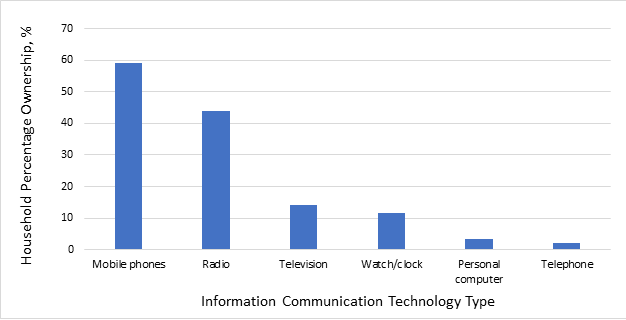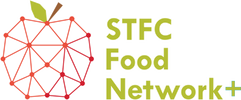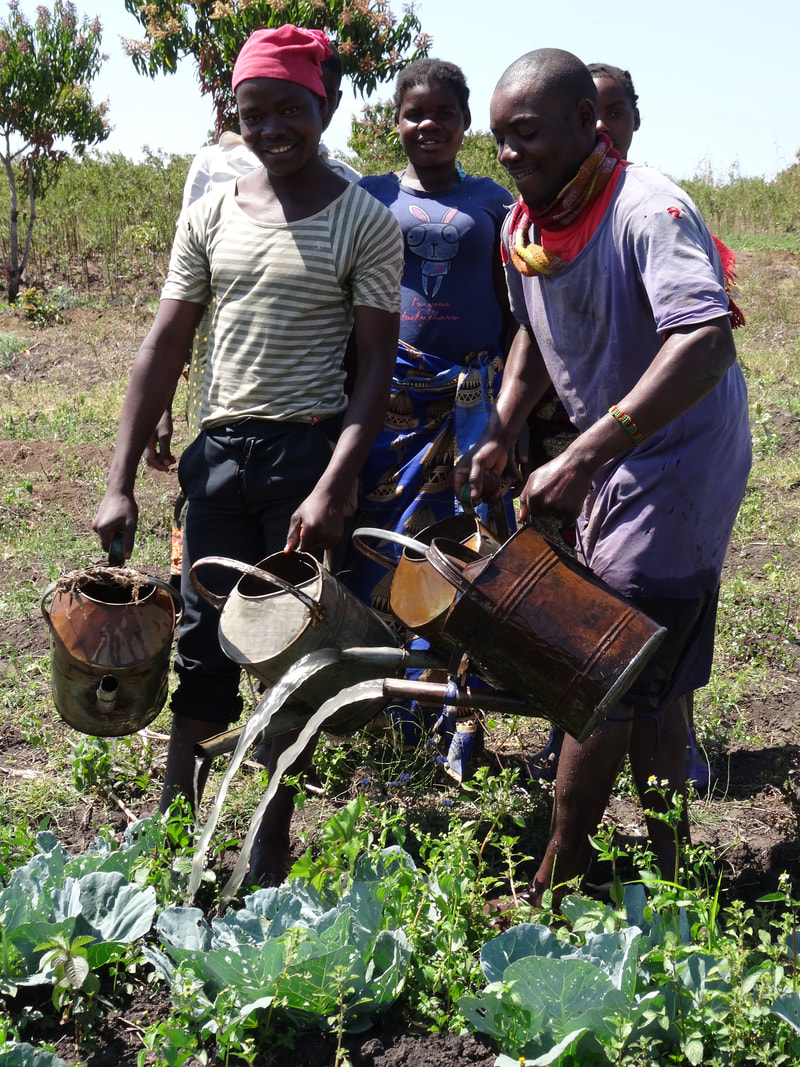|
A project supported by the STFC Food Network+ (SFN) is breaking down the barriers between different scientific disciplines to understand how new technologies can most effectively help small holder farmers. When we consider the challenges facing small holder farmers, we usually think of environmental and physical factors, such as climate change, crop diseases, droughts and degraded land. It’s easy to see how these impact yields and productivity, and it therefore seems natural for food security interventions to focus on them. But even the most sophisticated technologies can be rendered useless if they do not take into account the wider context within which they need to work. “New technologies certainly have a role in improving food security, but we need to consider the actual day-to-day circumstances that farmers operate in if we want to see effective change” says Lisa Emberson, an ecophysiological modeller at the University of York. “For instance, a brilliant new technology that boosts yields won’t make a difference if farmers can’t access the finance to afford it, or if a health issue means they are physically unable to implement it. If we want to avoid this, we really need to engage the environmental and physical variables with social, political and economic factors.” Traditionally, these disciplines have been distinct and separate, but as part of a scoping project supported by the SFN, Lisa is starting to break these barriers down. By aligning these areas to work together more closely, the aim is to identify the most critical issues affecting productivity for different groups of farmers. Along with her colleagues*, Lisa is exploring how to combine as many different datasets as possible, to cover the whole spectrum of variables that impact small holder farmers. “By linking these datasets to a common endpoint – such as yields or nutrition – we can then use artificial intelligence techniques to understand which factor is the most important in determining the result. For some farmers, it may be the climate, but for others it could be a local governance issue.” This will ultimately allow interventions to focus on where they can be most effective. The project was born out of the 2019 SFN Sandpit Event, where Lisa met her future collaborators for the project. Realising that new advanced modelling methods could help integrate social and environmental variables, they developed a proposal with three key aims:
Having decided to focus on southern Africa, the team built up a network of partners, including the CGIAR Agricultural Research Centres, agricultural extension officers, farmers, and agricultural research institutes. These provided a wide range of local datasets, including crop yields, soil health, local incomes and government policies. Meanwhile, Lisa’s collaborators from the STFC allowed the project to access climate-related datasets collected from satellites and remote sensing methods. The challenge now is to work out how to link these different datasets together, and the best methods to extract useful information. “The main problem we have found so far is that these datasets often use very different temporal or spatial scales” says Lisa. “For instance, physical datasets such as weather patterns can be on a regional scale with good coverage and spatial and temporal resolution. In comparison, socio-economic datasets are on a much more localised, household level often with sparse coverage over limited time periods, purely due to the practical difficulties of collecting these data by survey.” Fortunately, the project’s link with the STFC enables them to access experts in artificial intelligence and machine learning methods. These techniques can help with such disparities of scale, particularly when it comes to developing and applying novel methods to scale-up socio-economic data. Progress is promising and the team have already demonstrated, for instance, that ownership of Information Communication Technology varies considerably depending on wealth, age, sex and education level. Although many efforts to improve communication between farmers focus on mobile phones, only around 59% of surveyed households owned one. This means that other outlets, particularly radio, will likely play an important role in engaging ‘hard to reach’ social groups.  Percentage of survey respondents in Malawi, southern Africa, that own each Information Communication Technology type. The data show that mobile phones are the most commonly owned type of ICT, followed by radio. Other types of ICT are dramatically less commonly owned, with 30% less households owning a television than those that own a radio. This preliminary work has become the foundation of a full project proposal to identify how digital solutions could most effectively improve agricultural livelihoods in southern Africa, focusing on farmer’s health, women and minority groups. Potential solutions may include real-time digital data on market prices; digital financing platforms that allow farmers to secure loans; information dissemination via mobile phones to control crop diseases or digital documentation opportunities that improve land rights.
“I’ve really enjoyed working with a more diverse and interdisciplinary team to explore how environmental and physical science can work closely with social and economic science. In the real-life world that farmers experience, all these factors are integrated so it doesn’t make sense for these disciplines to work separately. Up to now, we have been good at paying lip-service to multidisciplinary working, but it hasn’t been done as effectively as it could be. Hopefully, we will set a precedent to change this” Lisa concludes. *The project team includes: Eleanor Jew, Connie O’Neill, Rob Brunt, Ibrahim Habli, Jonathan Hook (University of York); Naresh Magan (University of Cranfield); Wayne Martindale (The National Centre for Food Manufacturing); Christian Thierfelder (The International Maize and Wheat Improvement Center - CIMMYT); David Mkwambisi (Malawi University of Technology); Althea Wilkinson (Jodrell Bank); Dawn Geatches (STFC Daresbury) and Peter Allan (STFC Rutherford Appleton Laboratory).
0 Comments
|
AuthorJune 2024 - Archives
June 2024
Categories |
- Home
- Webinars and Events
- About the SFN+
- News
- Blog
- Expert Working Groups
- Funding
-
Publications
- Bioeconomy positioning paper
- SFN+ 5th Annual Conference
- OMM Policy Report
- ‘Multi-Stakeholder International One Day Workshop on Organic Agri-Food Value Chains for Net Zero’ Report
- SFN 2050 UK Net Zero Food report
- Sustainable Cold Food Chain Booklet
- Food Sensing Technologies for Safe and Nutritious Food
- Sustainable urban and vertical farming
- Projects
- Join/Contact Us


 RSS Feed
RSS Feed


